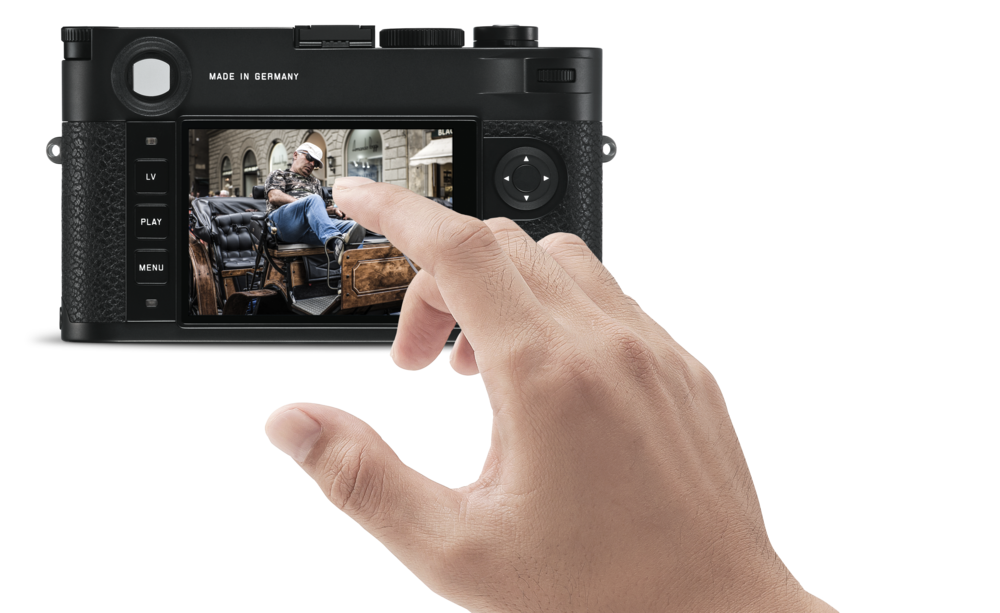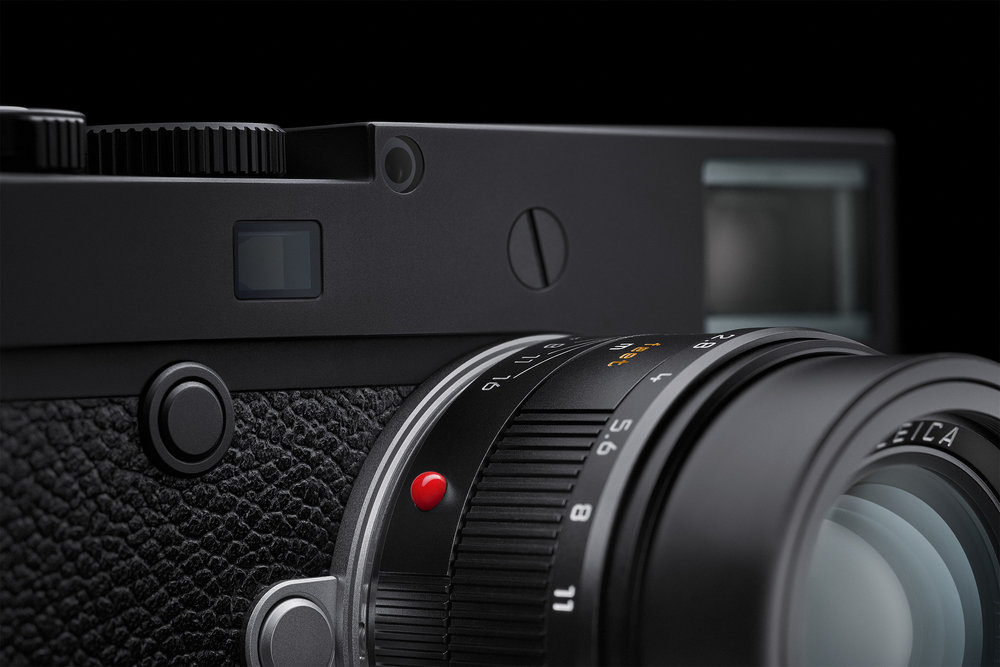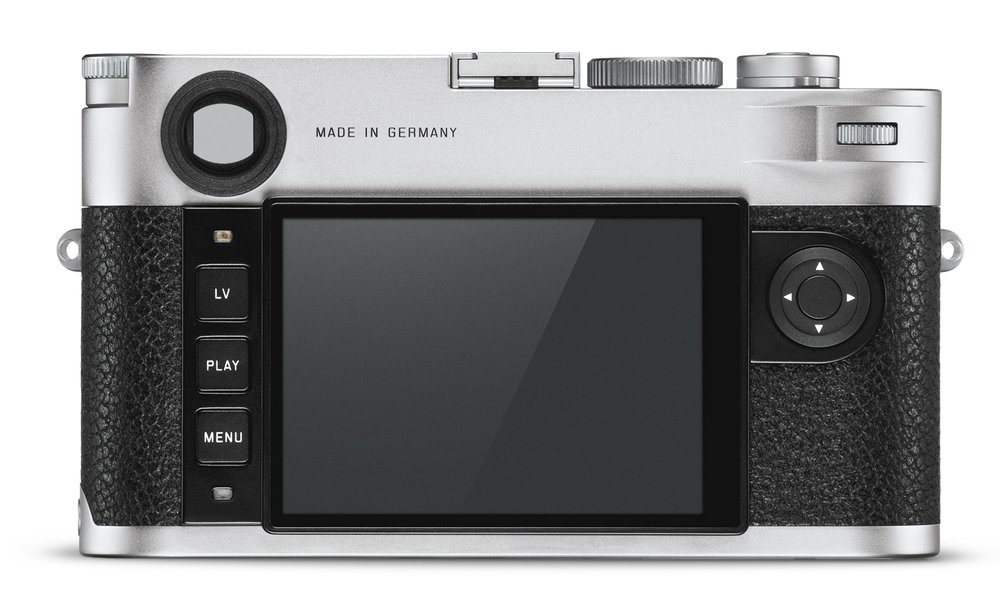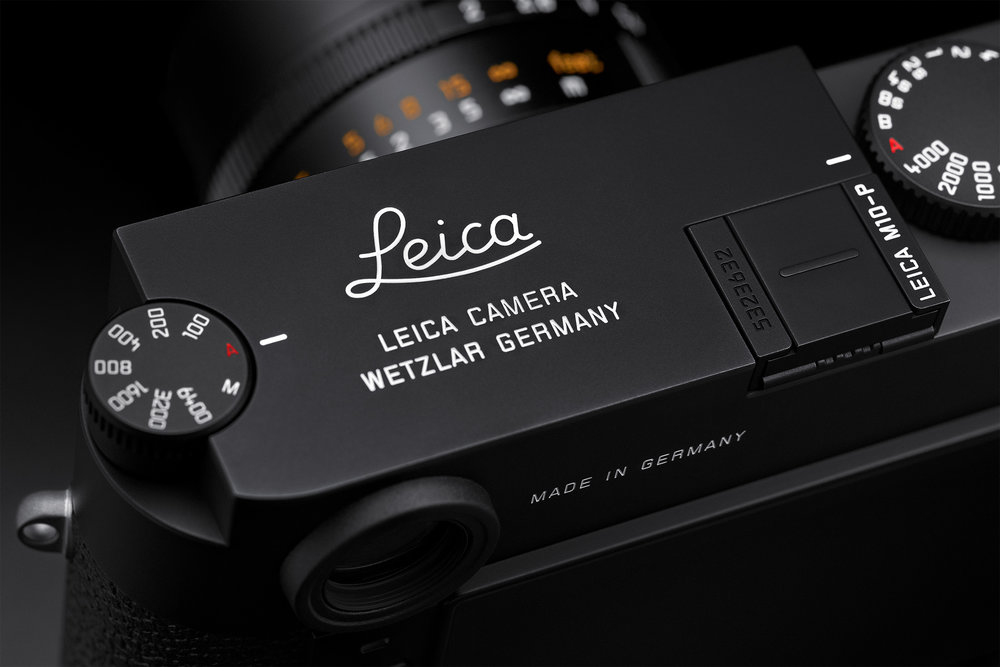Today Leica officially announces the mid-term -P version of the successful slimline M10. As expected, it features the usual cosmetic changes, primarily the removal of the red dot logo and the addition of the traditional logo and the “Leica Camera Wetzlar Germany” engraving on the top plate. As with earlier -P models, the large central screw which is used to adjust vertical alignment of the rangefinder is visible on the front of the camera — on the M10 it is hidden by the red dot.

The third traditional P improvement, the incorporation of a tougher sapphire glass screen, is missing from this upgrade. The M10-P must make do with the same Gorilla Glass as the M10. I will address this in a moment.
Internal changes on P models are usually very modest. The previous M-P, the enhancement of the original M240, got its memory doubled to 2GB which effectively tripled the buffer size.

This time there are two significant technical changes. One is the incorporation of limited touch facilities, including swipe and zoom. This could be something to do with decision not to incorporate the sapphire screen or, maybe, the tougher glass was too bulky for the slimline M10 body.
Of more importance to most M users will be the new shutter mechanism which is said to be virtually silent and will be the quietest digital or film camera Leica has ever made. A further minor upgrade is the incorporation of a level gauge when using live view on the screen.

The -P model is known to be something of a marketing exercise to boost mid-series sales and to encourage owners of the original M10 to upgrade. Everyone knows it’s coming, right from the introduction of the base model. The presence of the top-plate engraving is probably the single most important upgrade magnet among Leicaphiles, although the technical improvements will help encourage waverers.
In general, I would always recommend new buyers to opt for the -P model over the original because the small premium — in this case, the extra £650 — will be recovered on resale because the Ps are always more desirable. In the meantime, you can enjoy the appearance and the slight technical advances of the latest version.
Whether or not the M10-P is worth the upgrade for existing M10 owners is another matter. As the owner of an M10, I am not sufficiently wooed by the on-paper improvements to feel a need to upgrade at this time. I will borrow and review M10-P from Leica in due course and provide a more reasoned recommendation.
The M10-P will be available from today at a suggested selling price of £6,500, including 20% Value Added Tax. The original M10 continues at £5,850.
Read our assessment of the last -P model, the M-P from 2014.
Fact: The M-P was introduced in January 2014, 16 months after the Leica M(240) on which it was based. The M10 was announced in January 2017 and the M10-P arrives on cue 19 months later.
If Leica’s marketing department runs true to form we can expect other variations before the M10 range is superseded in 2020 at the earliest. A screen-less M10-D is strongly rumoured, but I doubt we will see another stripped-down M262-style variant because the M10 and M10-P took their cues from the successful M262 and omitted video. And, of course, the pace of special editions to tempt buyers will quicken as the M11 nears announcement. It’s all very predictable.
LEICA PRESS RELEASE
Leica M10-P: a new level of understatement
 2018-08-20 13-46-18.jpg (page 3 of 3) 2018-08-20 13-46-18.jpg)
Wetzlar, 21 August 2018. With the Leica M10-P, Leica Camera AG presents a further model in the Leica rangefinder camera range. Based on the M10, the M10-P offers all the technical advantages of the Leica M rangefinder system and, in details, focuses on the characteristic core features that are particularly appreciated by M-photographers. Exceptionally discreet and concentrating entirely on the most essential camera functions, the Leica M10-P embodies the essence of the M-philosophy and retains the celebrated understatement of previous incarnations.
The new and outstanding features of the Leica M10-P include the extremely low noise level of its shutter, the quietest shutter release of all M-cameras. This makes it the first digital M-camera that is even more discreet than its analogue predecessors. The almost inaudible sound of its shutter release makes it the ideal tool for capturing authentic photographs from the heart of life itself – especially in situations where quiet is essential. In addition, the design of the Leica M10-P is as minimalist as the camera’s functionality itself. The camera has no Leica red dot logo on the front and features only discreet Leica lettering on its top plate. Its hot shoe cover in metal merges seamlessly into the design of the top plate.
The Leica M10-P fulfils everything that discerning photographers expect from a Leica M and, through the concentration on essential functions, follows the lead of all past and present Leica M-cameras. A new addition is the touch-function that enables faster checking of the plane of focus in Live-View and Review mode, more convenient browsing in Review mode and faster access to all the most important functions. The M10-P also has an integrated spirit level that enables perfect orientation of the camera and avoids the need for laborious corrections in post-processing.
All other features, functions, construction materials and the finishing of the Leica M10- P correspond to the same high standards as those of its sister model, the Leica M10.
The Leica M10-P is available from today from authorised Leica UK stores and authorised Leica dealers and is offered in a choice of black chrome and silver chrome finishes for £6,500 including VAT
____________
- Subscribe to Macfilos for free updates on articles as they are published
- Want to comment on this article but having problems?

